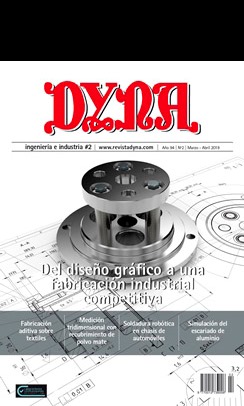EFFECT OF THE MATTE POWDER COATING ON THE ACCURACY OF THE MEASUREMENT OF A CONICAL CHARACTERISTIC BY OPTICAL TECHNIQUES
Keywords:
metrología sin contacto, recubrimiento mate de polvo, repetibilidad de medición, medición cónica, non-contact metrology, matte powder coating, measurement repeatability, conical measurement.Abstract
Three-dimensional non-contact optical measuring systems, which project structured light patterns, are not only widely used to recover the real geometry of an object, but also in the area of quality control. In order to carry out a precise measurement with optical techniques, it is necessary to avoid reflections produced by the light falling on the metal part. For this, it is necessary to cover it with matte powder. The coating operation is, normally carried out manually by spraying the powder onto the work-piece. In particular, a spray with magnesium oxide powder has been used, achieving a thin and uniform fairly layer. In general, the aim of this article is to evaluate the possibility of controlling the manufacturing tolerances achieved in machining processes by means of optical techniques. In particular, the purpose of this research article is to obtain information on the effect the powder coating in the precision of an angular measurement of a conical feature by means of 3D optical techniques using the ATOS II scanner. The part chosen to perform the study is a SK40 DIN2080 tool holder cone. A procedure is established to capture and measure the geometry of the part. Then, the measurements obtained are compared with the nominal dimensions and the accuracy and precision of the measurements are characterized. An estimation of the repeatability of the process is carried out. The results prove that the uncertainty in the controlled conical measurements remains limited. Finally, the influence of the applied matte coating in the systematic error is quantified, and some interpretations of the origin of the random error are proposed.Downloads
Published
2019-03-01
Issue
Section
ARTICULOS

